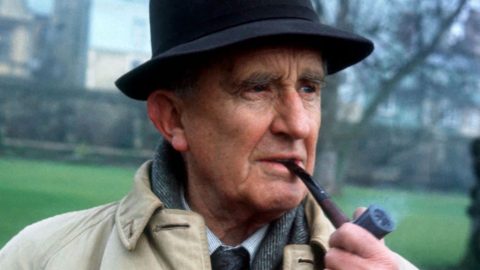In The Critic, David Engels outlines the early life and career of J.R.R. Tolkien:
The biography of the British writer and philologist John Ronald Reuel Tolkien (1892-1973) is quickly summarised and, despite a few unusual cornerstones such as his early childhood in South Africa, the tragic death of his parents and the highly romantic love for his later wife Edith, not very spectacular. An existence confined entirely to the British Isles except for a few forays into the continent; a military service in the Great War only moderately traumatic compared to other fates; an honourable but hardly groundbreaking academic career; a life as father of a family that knew the most varied but hardly extraordinary fortunes.
Not really the stuff of legends — except for the global success of The Lord of the Rings, which arrived too late to set Tolkien’s existence on a different course. The (deeply unsatisfying) 2019 film adaptation of Tolkien’s youth attempts to surround him with the aura of a scholarly genius and war hero, and to explain his literary work biographically — but this reductionist attempt rather hinders the understanding of his oeuvre. Tolkien’s works are not exceptional because his life was: on the contrary, their exceptionality only gains its full significance when they are understood against the background of an altogether quite normal existence.
Of course, with such an undramatic approach, it is tempting to associate Tolkien’s enormous mythopoeic activity with the catchword “escapism”, and to reduce it once again to his biography, albeit this time not as a correspondence but as a compensation. This, too, misses the point — all the more so because Tolkien’s earliest literary activity goes far back into his teenage years: his work is not a reaction to his life, but rather the two grew in union, not unlike the mythical trees Telperion and Laurelin. Indeed, one might even regard Tolkien’s rather ordinary academic and family life as a consequence of his consuming, lifelong work on myth rather than the other way around. But what was Tolkien’s intention — and what can we learn from him?
In the beginning, there was disappointment. The Anglo-Saxon world, unlike France or Germany, has scarcely left any traces of an indigenous myth tradition; even the saga of King Arthur belongs to the pre-Anglo-Saxon, Celtic tradition. The Norman Conquest destroyed the entire Anglo-Saxon legend tradition, apart from a few nursery rhymes and place names and a very brittle literary corpus.
As an ardent lover of the Northwest of the Old World, the young Tolkien felt cut off from his own heritage and enthusiastically took up Indo-European linguistics as a technique for reconstructing the historical and mythical tradition of times long past. He set about, partly in play, partly in earnest, creatively deciphering and reconstructing the hitherto misunderstood evidence of England’s dark centuries. In the process, the boundary between etymology and mythopoetics quickly blurred, as Tolkien enriched the hypothetical material obtained by merging it with the archetypal content of the other legends of the ancient world. He created a mythical tradition that took on a character of its own.
But it would be wrong to interpret this legendarium, which was born out of linguistics but soon took on increasingly literary features, as a mere poetic game. Especially in the initial phase of his attempts, Tolkien endeavoured to introduce the increasingly coherent legends and sagas, which are known to the general public mainly through the posthumous Silmarillion and the publishing activities of his son Christopher, by use of a wide variety of framework plots, some of which have an old Anglo-Saxon character and some which are set in modern times. The leitmotif was the dream of the great wave that swallowed up a green island, which later became the seed of the “Fall of Númenor”; an image that haunted Tolkien himself often enough in his sleep and led him to state that those images, recorded partly in dreams and partly in a half-awake state, were not to be regarded as mere fiction, but rather as access to something true and permanent, which he fleshed out in various literary ways, but whose core consistently bore the character of a vision.




